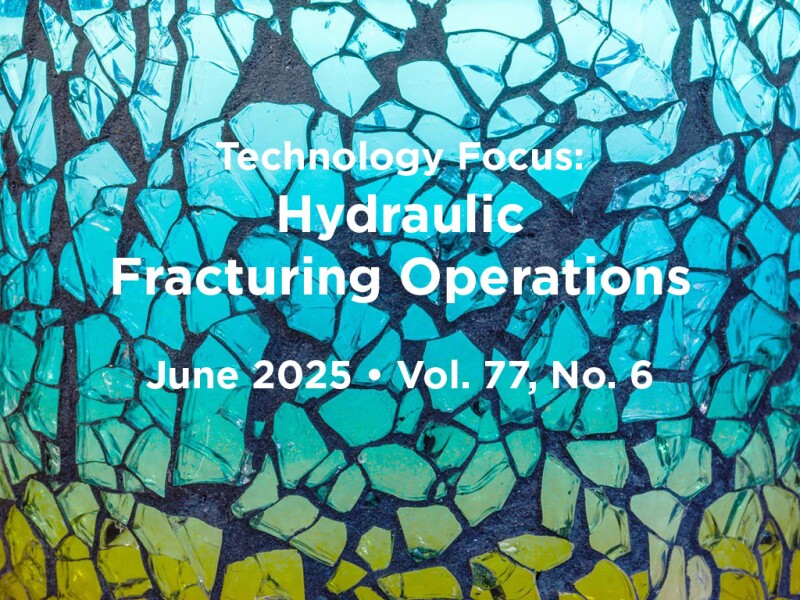Modern completions often are equipped with downhole measurement devices that provide critical real-time data not only during the hydraulic fracturing treatment but also during the ensuing production phase. In paper SPE 223581, the authors propose a method to interpret changes in far-field strain and pressure data obtained during treatment and well production to estimate fracture connectivity at the perforation-cluster level. Based on their novel interpretation method, the authors show that the level of connectivity between the treatment well and the monitoring well is higher during the treatment than is observed during production. The authors suggest that the proposed approach can assist in improving treatment designs and spacing to maximize long-term fracture conductivity.
The use of hydraulic fracturing to create an enhanced geothermal system (EGS) for geothermal wells has gathered considerable interest in recent years. Paper SPE 223519 details the outcome of some of the studies conducted at the Utah FORGE project. The authors detail the test matrix consisting of several stages where fluid, proppant, and perforation clusters were varied to understand their influence on well performance. The data acquisition consisted of microseismic surveys and fiber-optic cables for strain measurement, along with routine pressure and temperature measurements. Post-treatment review and analysis, including short- and long-term circulation tests, are shared by the authors.
In paper SPE 223533, the authors highlight the aseismic nature of some rock formations, which often raises questions on fracture placement after treatment or a lack thereof. To investigate this issue, the authors integrated the miscroseismic observations with strain measurements to reach conclusions that offer plausible explanations for the occurrence of quiescent zones during active microseismic surveys. The authors attribute the phenomenon to rock makeup, such as those with predominantly nonshear failures, and others to interbedding of shaly layers contacted by the fractures.
Summarized Papers in This June 2025 Issue
SPE 223581 Approach Quantifies Well Connections With Monitoring-Well Responses by Jingyu Liu, Texas A&M University et al.
SPE 223519 Study Details 2024 Enhanced Geothermal System Hydraulic Fracturing Campaign at Utah FORGE by Kevin England, E-K Petro Consulting, et al.
SPE 223533 Approach Interprets Fracture Growth Through Microseismic Quiescent Zones by Shawn C. Maxwell, Ovintiv, et al.
Recommended Additional Reading
SPE 223567 Far-Field Drainage Along Hydraulic Fractures: Insights From Integrated Modeling Studies in the Bakken and Permian Basin by Ankush Singh, ResFrac, et al.
SPE 221046 Acid Job Limit in Proppant-Fractured Formations Across Various Formation Types by O. Karazincir, Chevron, et al.
SPE 223572 Acid-Fracturing-Treatment Design Optimization in North Sea Chalk Wells in Norway by Vibhas J. Pandey, ConocoPhillips, et al.

Vibhas Pandey, SPE, is an engineering fellow with ConocoPhillips in Houston and has 35 years of industry experience, with expertise in hydraulic fracturing and well performance. He holds bachelor’s and master’s degrees in mechanical engineering and turbomachines, respectively, from the National Institutes of Technology in India, a master’s degree in petroleum engineering from the University of Oklahoma, and a doctorate in petroleum engineering from the University of North Dakota. As an SPE member for more than 25 years, Pandey has served on various conference and workshop committees. He has authored numerous technical papers and chapters in SPE books. Pandey was a Distinguished Lecturer in 2022–23 and currently is an Associate Editor for the SPE Journal and serves on the JPT Editorial Review Board.

